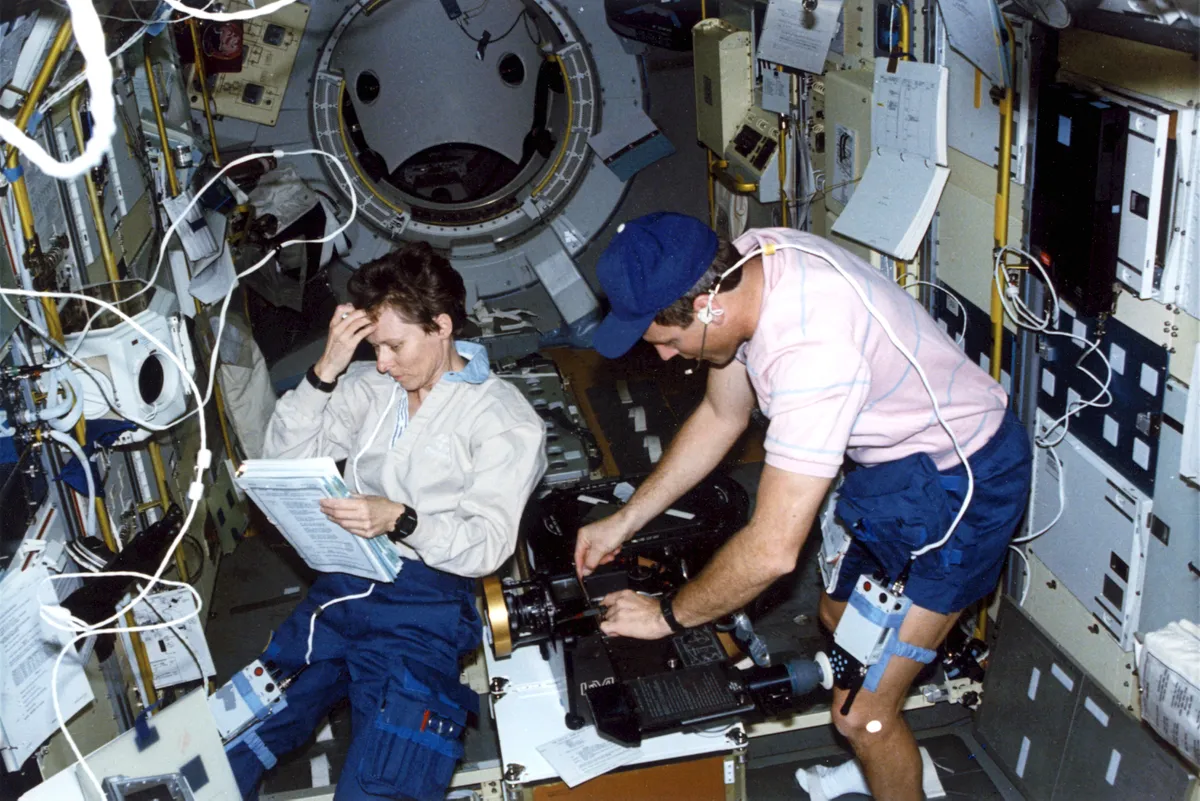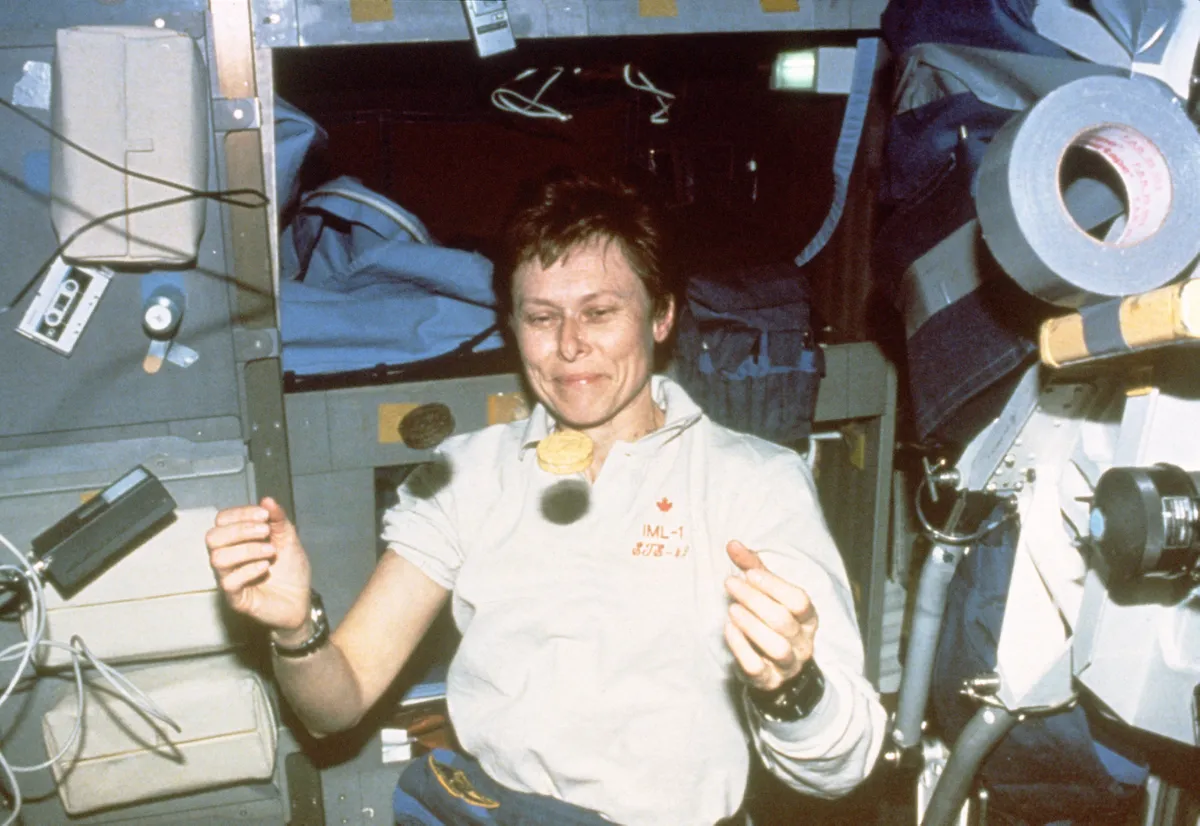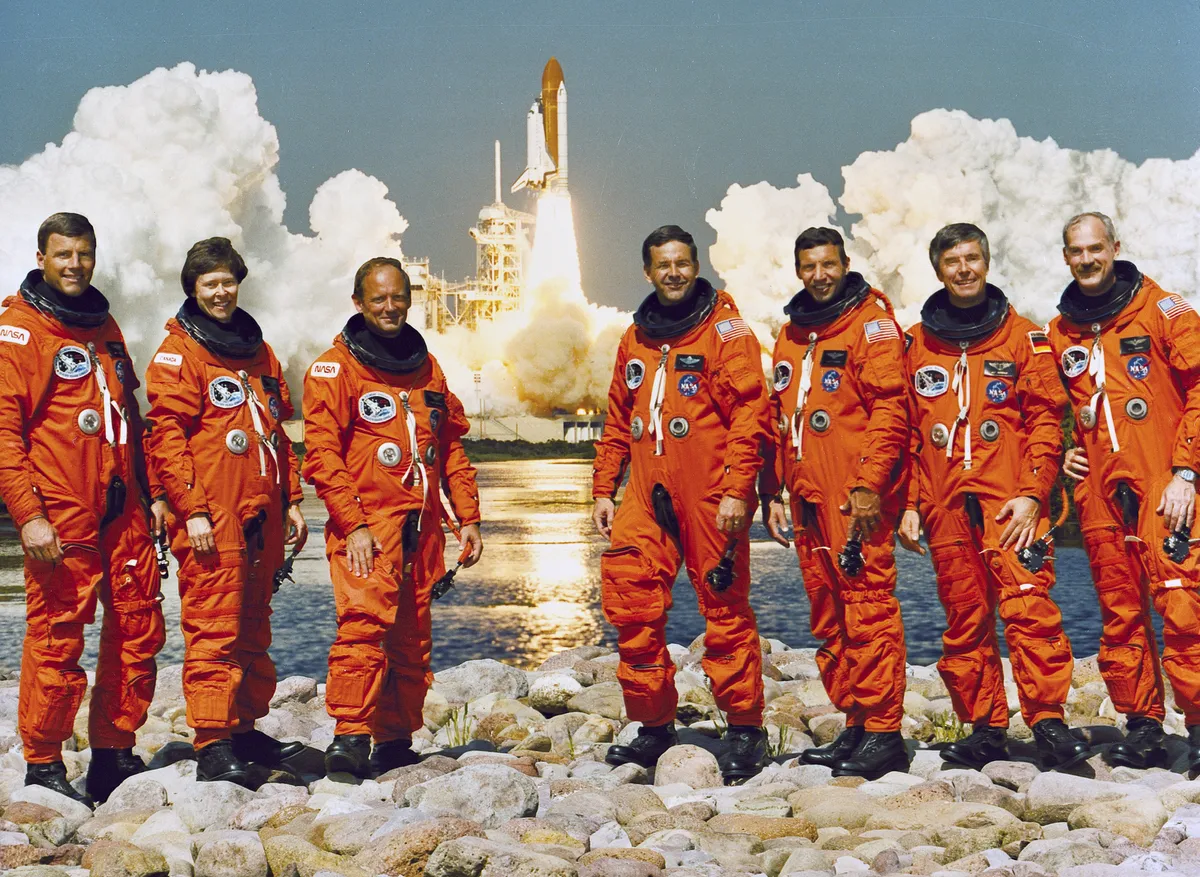These days Dr. Bondar’s work lies at the intersection of creativity, nature and education, including a project she initiated in collaboration with NASA, the U.S. space agency, to photograph migrating birds from the ground, air and space.
All of that was still to come when Dr. Bondar was roaring into orbit three decades ago atop a blazing column of fire and rocket exhaust. Across the country it was a moment of euphoria mixed with apprehension. Canada had already seen one of its astronauts take flight when Marc Garneau rode up on Challenger in 1984. But two years later, Challenger blew up seconds after launch, claiming the lives of its seven crew members and grounding the shuttle program for two and half years. By the time it was Dr. Bondar’s turn to fly, that disaster was still fresh in the public consciousness. And privately, she had to decide if she was still willing to risk all for the chance to experience spaceflight.
“I wasn’t fearing for my life. I was fearing for what I was putting my mother and my sister through,” said Dr. Bondar, who turned 76 last month. It is half a lifetime ago that Canada selected her, in 1983, as the only woman in its first contingent of astronauts. But it would take another nine years before she could get to the launch pad.
By then, her father had passed away and his absence was keenly felt. After Challenger – an event that Dr. Bondar said left her feeling like her stomach was sinking into a void that would never end – she was buoyed by her family’s unhesitating support for her mission, even when it was better not to dwell on the risks. At one point, when she sent home a photo she had taken of herself flying in a supersonic jet and passing Mach 1, as it broke the sound barrier, her mother responded, “Okay, we know you’re safe. Just don’t send the pictures!”
Elaine Paterson, a long-time friend who also sits on the Foundation’s board, was at Dr. Bondar’s shuttle launch. She said that watching Discovery successfully ascent into the skies above Cape Canaveral left her in tears. But there was no doubt in her mind that Dr. Bondar was exactly the right person to represent Canada in a mission to space and to share the experience when she returned. “She’s interested in everything,” said Ms. Paterson, who, as a former commissioner of Girl Guides Canada was thrilled when Dr. Bondar demonstrated weightlessness by using Girl Guide cookies she had carried with her into orbit. “She’s curious and she wants to learn more. And she’s a great teacher, with a selfless, unassuming style that makes it easy for people to learn from her.”
That profile formed early, thanks to the influence of a technically minded father who loved photography and a mother who would later return to school to become a teacher. Her parents, who came of age during the Depression and the Second World War, loved to explore alongside their children, Dr. Bondar said, as if making up for experiences they has missed when they were younger. “They made the question ‘why’ be an important value – to ask the question and then to try to seek an answer,” she said.
Dr. Bondar’s own path of discovery was a winding road that made it hard to categorize her when she first became a public figure in Canada. She started her undergraduate career with the role of teacher in mind, but soon came to love laboratory work and science just as much. She attended the University of Guelph, where she completed her bachelor’s degree in zoology and agriculture, before moving onto graduate work at Western University and a doctorate in neurology at the University of Toronto. It was then that she realized medicine offered an avenue for combining her academic interests with a desire to help others. After completing her PhD, she went on to earn an MD from McMaster University in 1977. Along the way she picked up a pilot’s licence and was inspired by the Apollo moon landings, but at the time there was no avenue to pursue such a dream in Canada, particularly for women.
That changed a few years later, when the call went out for candidates to join Canada’s inaugural astronaut class. At that time, her gender and education meant that she did not have the same military flight or engineer experience as her male counterparts. But she realized that it was the diversity of her academic background — which ranged from spruce budworm genetics to the neurobiology of vision — that made her a unique fit for the role.
There were still awkward moments along the way. When she was interviewed by officials as part of the selection process, she was told she could answer a question about which heroines had inspired her, instead of heroes, as the male candidates had done. “I asked, why can’t I speak about heroes, and why can’t they speak about heroines?” Dr. Bondar said.
It was an early sign that, despite her qualifications, the administrators of Canada’s space program were not sure how to relate to a female astronaut. Dr. Bondar said she did not feel well-supported in the leadup to her mission and that much of her training went undocumented, except for photos she took herself. Less than eight months after her flight, she said the Canadian Space Agency did not renew her contract and she was out of the program, though she continued to work directly with NASA on her space-related neurology research.
The exit came with deep disappointment. She had wanted the chance to fly again, and felt she was the ideal candidate for a follow-up mission dedicated to the neurobiological changes that astronauts experience during spaceflight, and their subsequent reacclimatization to Earth. (The mission took place in 1998 with Canadian astronaut Dafydd Williams as a crew member.)
Lisa Campbell, the current president of the Canadian Space Agency and the first woman in the role, said she could not speak to the organizational culture 30 years ago, but said Dr. Bondar’s courage and perseverance inspired a generation. “I was a young law student at the time, and very involved in promoting women’s rights and equality,” Ms. Campbell said. “The whole world was watching and I remember feeling very proud as a Canadian.” She added that Dr. Bondar had sent her a personal note of congratulations when she took charge of the agency in 2020.
Years before, with her career as an astronaut behind her, Dr. Bondar was faced with reimagining her next chapter. She explored returning to medical practice, but her public profile made hospital rounds uncomfortable. She said that at one point, while helping out in a busy emergency room, she was asked to look at a patient with a bowel issue. As she prepared to examine the patient, he started to cry. “Do you want me to get someone else?” she asked. “Oh no, Dr. Bondar,” the patient said. “It’s just freaking me out. I did a project on you in Grade 3.”
“I learned that it was going to take a huge thing to be able to be that intimate with a patient again,” Dr. Bondar said.
It was the emotional power of what she had felt in space that led her to seek formal training in photography. Then, with the turn of the millennium approaching, she set out on a largely self-funded project to photograph all of Canada’s national parks over two and a half years.
Ms. Paterson called the result “a love letter to Canada.” Dr. Bondar said that at the time, people did not seem to understand what she was doing.
“I wanted to look at what it is that we value as Canadians,” she said, adding that photographs will ultimately stand as a record of some of the country’s most significant natural spaces as they were before they had been altered by climate change.
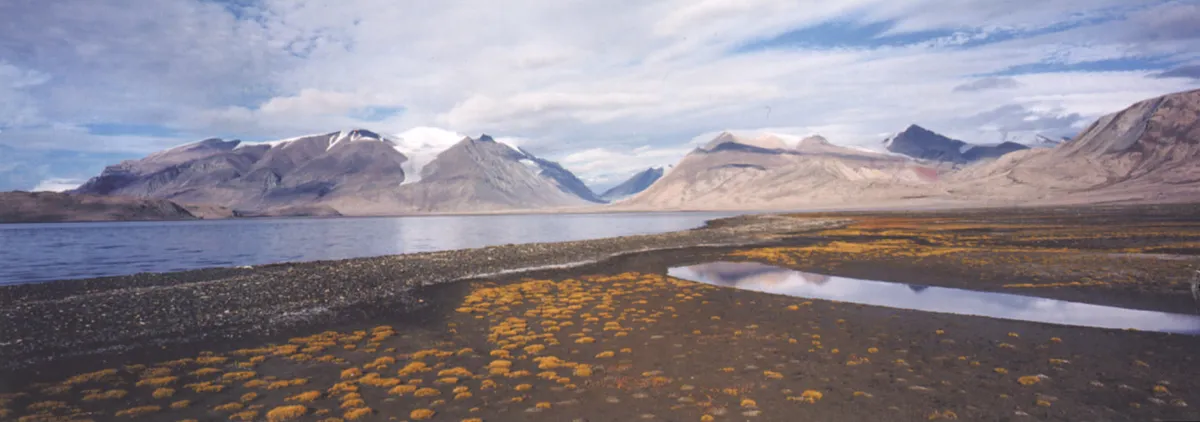
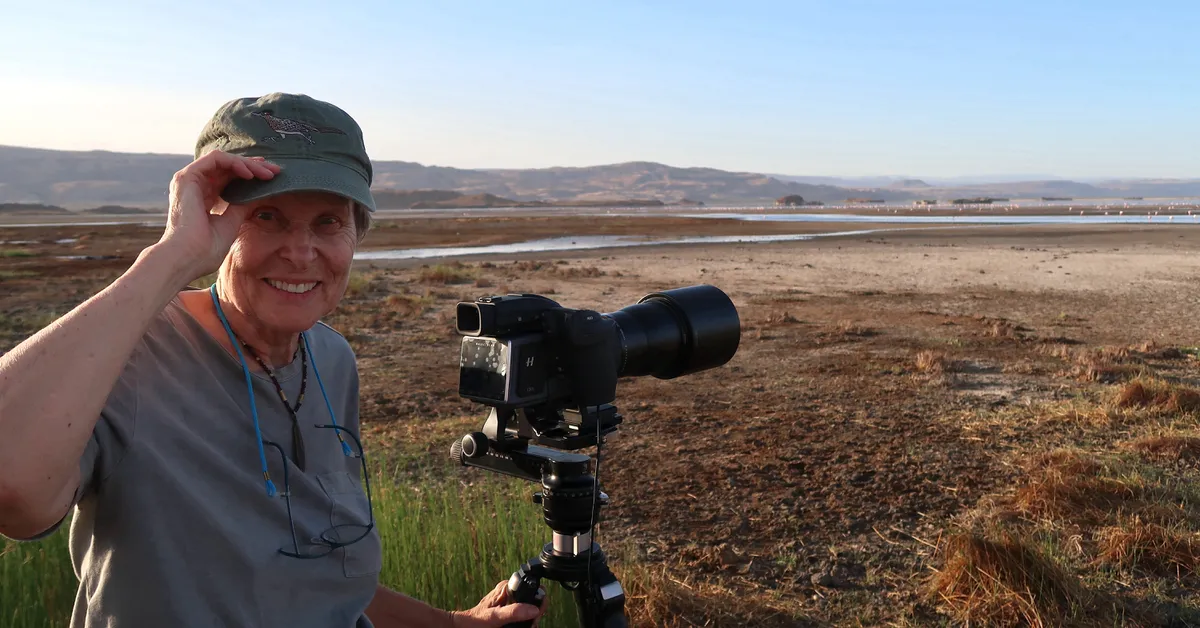
One of Dr. Bondar’s photos from a Canadian national park, and Dr. Bondar behind the camera at a flamingo nesting area in Tanzania. ROBERTA BONDAR, COURTESY OF ROBERTA BONDAR FOUNDATION
An exhibition of her photographs and the accompanying book, Passionate Vision, led to more travels, more environmental projects, and more engagement with science, including her migratory birds project. When she concluded a six-year chancellorship at Trent University in 2009, she began her foundation to advance projects at the intersection of creativity, nature and education.
Asked what the ideal Grade 3 project should include to accurately capture what she is all about, Dr. Bondar laughed, and then said the most important word would be “curiosity,” followed by “gentleness and caring.” These terms, she said, speak to her family’s values, and her own values as a physician and scientist.
“It’s about respect for others and respect for life,” she said. “And if people can’t get that out of the stuff I’m doing, then I guess I’d better stick around a little longer and continue to try to do it better.”
